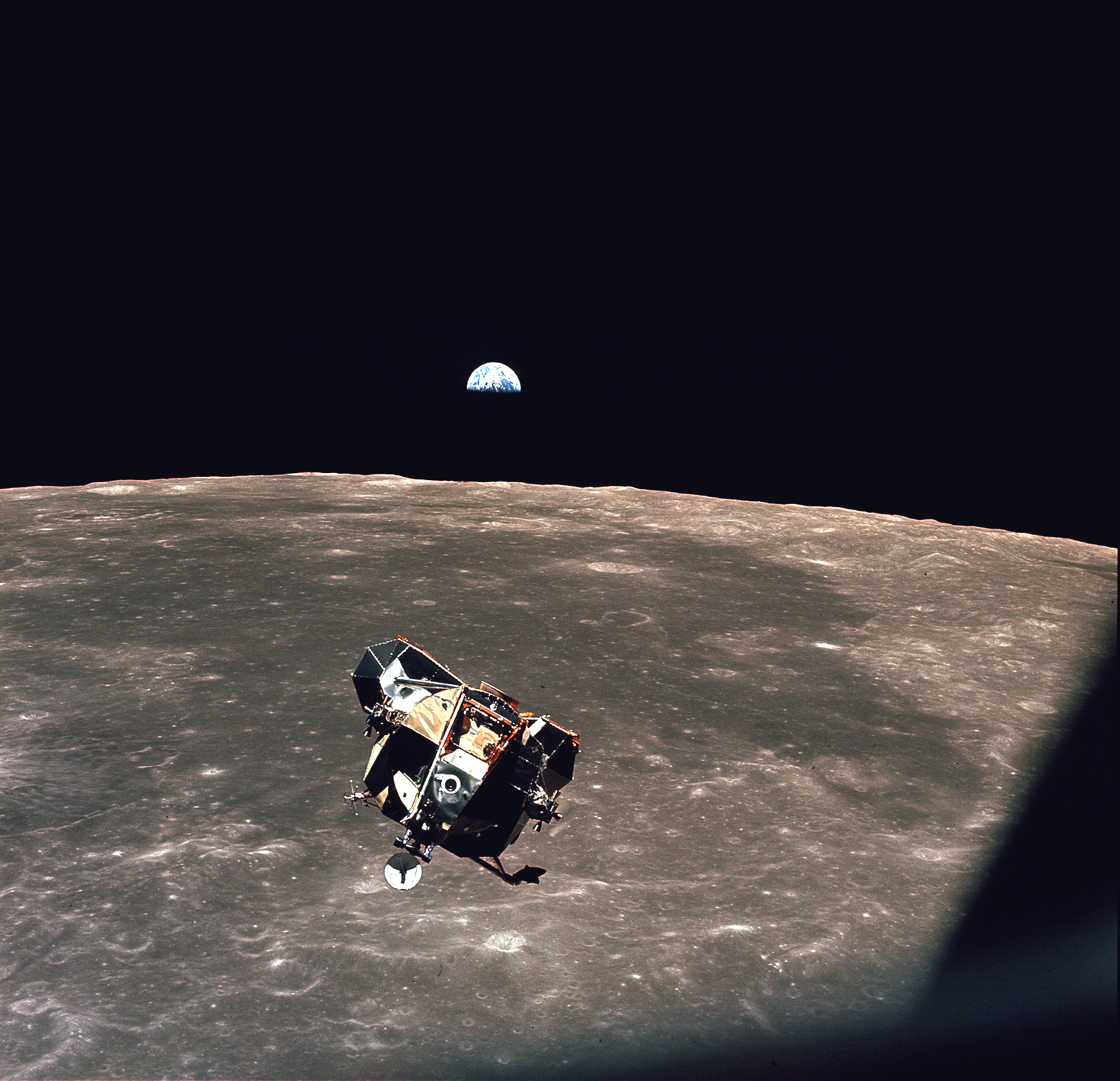#photography #photostory #astrophotography #space
Eagle's Return
⏱️ Approx Reading Time: mins
I wanted to share some thoughts on this photograph more than analyse it from a technical perspective. While there was likely some planning and pre-thought, it really is a moment captured in time as opposed to a meticulously planned image (thought it might have been, you get my gist). This is an image that I've thought about a lot since discovering it over five years ago. I never used to study others images, however as I've developed as a photographer I derive great pleasure from looking at others' images, whether it be to extract the story the photographer wanted to tell, or as is the case for this photograph, to discover the hidden meaning behind the photographs we take.

Eagle's Return - Michael Collins (NASA[1])
A Unique Perspective
To anyone familiar with the Apollo 11 mission, you may notice the striking and unique perspective that this image captures. Micheal Collins held the role of Command Module Pilot for the Apollo 11 mission, which means that he never descended to the Moon's surface. Instead he remained in the Command and Service Module orbiting the Moon. The role of the CSM was to transport three astronauts into Lunar orbit and act as a mothership in Lunar orbit. The Lunar Module Eagle detached from the CSM and descended to the Moon's surface before returning to the CSM where two astronauts would move back into the CSM. The CSM would then carry the astronauts back to Earth before splashing down in the ocean. This was remarkable journey.
This sequence of events was what resulted in the very specific perspective Michael Collins had during this photograph; he was the only human, past or present, that isn't in the frame of this photograph. This is because Neil Armstrong and Buzz Aldrin are in the LME in the foreground, and all other humans are on Earth. A truly unique perspective indeed.
The Opposite of Insignificance
The more you think about, and look at, this image, the more that you can glean from it. As with many images take from spacecraft of our home world, there is a looming sense of insignificance that shines out at you. Stop to think for a moment, how would you feel if you had your phone in your hand right now, and you were able to snap a photograph of the entirety of planet Earth and all of it's inhabitants apart from you. Do you get that oppressive feeling of wondering what's behind you? Like when you run upstairs at night in the dark feeling like you're being chased? I do. The very fact that you are the only person, the only person who is the exception, is kinda nerve-racking to me. But, at the same time, it would make you feel invincible, like you are literally on the top of the world, even if you are at the mercy of the engineers that built the tin can you're floating in.
The Loneliest Man in the World
Collins was often dubbed the loneliest man in the world during and after his trip to the Moon because when he was orbiting behind the Moon, nobody could contact him. He was truly alone. Collins didn't see it like that, he enjoyed the peace and quiet. Later, he revealed what worried him the most was the little colony of white mice back on Earth. Why you ask? Well when the Apollo crew returned home, they were kept in quarantine for a short while to ensure that they hadn't brought Moon germs back with them. A colony of white mice were used as 'Budgies'. If any of them fell ill or began acting strangely, then it might be because the astronauts brought back pathogens with them. Collins worried about the mice.
Created by Niall Bell (niall@niallbell.com)
Photo credit remains that of NASA. Original photograph taken 21 July 1969 and scanned 10 October 2017. ↩︎